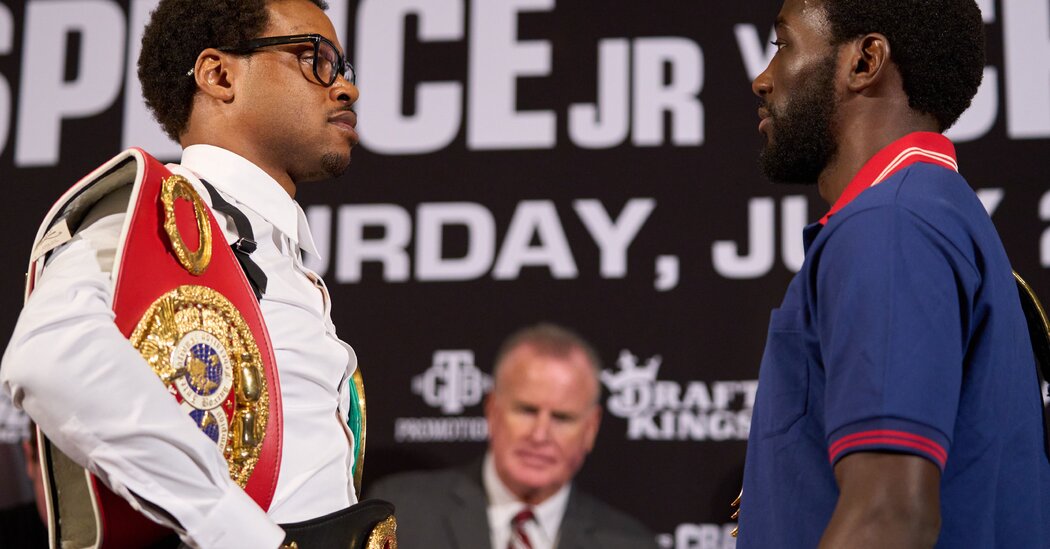Long-Distance Runner Alicia Monson Finds Time to Stand Still
As a high school senior and a musical theater enthusiast in Amery, Wis., Alicia Monson hoped to join her classmates in their production of “The Wizard of Oz” in the fall of 2015.
In fact, Monson could have had a leading role, said Laura Badman, who was co-directing the show. Monson had a lovely singing voice.
“She was an alto,” Badman said. “She was very good at harmonizing.”
The problem was that Monson knew she needed to focus on her cross-country season. She was a top college prospect who had designs on a state title. Still, Badman could sense that Monson was torn — the lure of musical theater was strong — so Badman floated the possibility of her taking on a slightly less demanding role. Monson jumped at the chance.
“She was a tree,” Badman said.
Monson never needed to be the star, said Badman, who has since retired as the choir director at Amery High School. Monson simply wanted to be a part of something that she enjoyed, and she wanted to do her job well. In high school, Badman said, that meant that Monson was perfectly content to join rehearsals three times a week so that she could take the stage in a garland of leaves and yell at Dorothy for picking her apples.
In some ways, not much has changed. Monson, 25, has committed herself to something that she enjoys, even as fame has found her. Badman was watching from home in Amery on Saturday as Monson took the stage, finishing fifth in the women’s 10,000 meters at the World Athletics Championships in Budapest.
“She’s just amazing,” Badman said in a phone interview. “She’s never wanted to miss out on any opportunities that she might be able to benefit from or learn from.”
Monson, who will race in a preliminary heat of the 5,000 on Wednesday, has already had a remarkable year. She has broken American records in three events, including the 5,000 and the 10,000, and her performance on Saturday offered redemption: She had wanted to improve on her 13th-place finish in the event at last year’s world championships.
“I knew I was better than that, and I wanted to make myself proud,” she said, adding: “I don’t think I ever fully got over it. Every practice, I was like, I need to get better, I need to put myself out there.”
Monson was just as determined as a high school senior when she tore the anterior cruciate ligament in her right knee playing basketball. She was back on the track by the spring, winning a state championship in the 3,200.
“I was never a phenom, but I just kept at it,” she said. “Track season was so fun in high school. You’d get out of class and be able to spend time outside and just hang out.”
At Wisconsin, Monson continued to deal with injuries. She recalled how she would pick up some momentum, then suffer a setback that would force her to restart the process. When healthy, she revealed glimpses of her potential, winning an N.C.A.A. indoor title in the women’s 5,000 in 2019.
Now, as a professional with On Athletics Club, Monson is coached by Dathan Ritzenhein, who understands the highs and lows of the profession, along with the dangers of overtraining. Like Monson, Ritzenhein was supremely driven during his own career, running with a sharp-edged determination that landed him on three Olympic teams. But he also coped with injuries.
“If anything, he doesn’t tell me to go harder,” said Monson, who lives and trains in Boulder, Colo. “He tells me to go easier.”
That remains a work in progress. Olli Hoare, an O.A.C. teammate who ran with Monson at Wisconsin, recalled periods last year when Monson would routinely grind through mile repeats about 15 seconds faster than Ritzenhein had assigned her to run them.
“And then she’d be on the ground, cooked,” Hoare said. “She’s always doing 120 percent of everything, and that’s why she can push herself to points that other people can’t.”
Part of the equation, Hoare said, is that Monson is acutely aware of the gap that exists between herself and the runners at the very top of her field — runners like Sifan Hassan of the Netherlands, who won medals in three events at the Tokyo Olympics in 2021, and Gudaf Tsegay of Ethiopia, who won the 10,000 on Saturday night after Hassan tripped a few meters from the finish line.
“She knows that what she has to do is push herself to the extremes,” Hoare said of Monson.
Monson’s willingness to visit those dark places manifested itself at the U.S. Olympic trials in 2021. The women’s 10,000 was staged in molten conditions, and Monson was among those who suffered the most.
She does not remember much about the second half of the race, she said, other than being in “manual mode” and stumbling with about 200 meters to go, which was when Karissa Schweizer passed her to move into second place. Monson held on for the final qualifying spot in third. She subsequently landed in the hospital with heat stroke and hypothermia. Her teammates brought her a chocolate milkshake.
“I just feel like I showed up that day and was like, ‘There is no way I’m not making the Olympic team,’” she said. “I mean, it paid off. But I also had to go to the hospital, so I’m hoping not to do that anymore.”
One of Monson’s early challenges with O.A.C. was that she wound up training a lot on her own, which was the price she paid for being an aerobic cyborg. As Ritzenhein put it, “You run out of people to run with.” But in more recent months, Monson has had company.
Hellen Obiri, a two-time world champion from Kenya, joined the team last year as she transitioned from the track to the marathon. And Josette Norris Andrews, a decorated middle-distance runner, signed with the team in January. For Monson, they present the best of both worlds: She can do speed sessions with Norris Andrews, while Obiri offers a blueprint for high-end endurance work. Monson recalled training with Obiri this spring as Obiri was preparing for the Boston Marathon, which she won.
“I think that gave me a lot of confidence since she’s the best who’s ever done it,” Monson said.
But as much Monson pushes herself — she typically runs 90 to 95 miles a week — she has learned from her mistakes. She knows that she cannot operate in the red zone every day.
“There’s no point in training too hard on an easy day,” Monson said.
The life of a distance runner can be an odd one. “You can only really do passive things in between runs,” Monson said. So she prioritizes rest and — relatively — slow runs. She reads, crochets and plays the piano. She walks her dog, Bert, which she considers “a very good form of active recovery.” She visits thrift shops with her boyfriend, Benjamin Eidenschink, an accomplished runner who often trains with O.A.C.
And there is always the pull of home. Whenever Monson visits friends and family in Amery, Badman said, she likes to link up with the high school cross-country team for a trail run. For a group of star-struck teenagers, her presence is surreal — the distance-running equivalent of LeBron James dropping by for lunchtime hoops.
But nothing has changed, not really. Monson still wants to enjoy herself, even if she is jogging among the trees instead of playing one.


